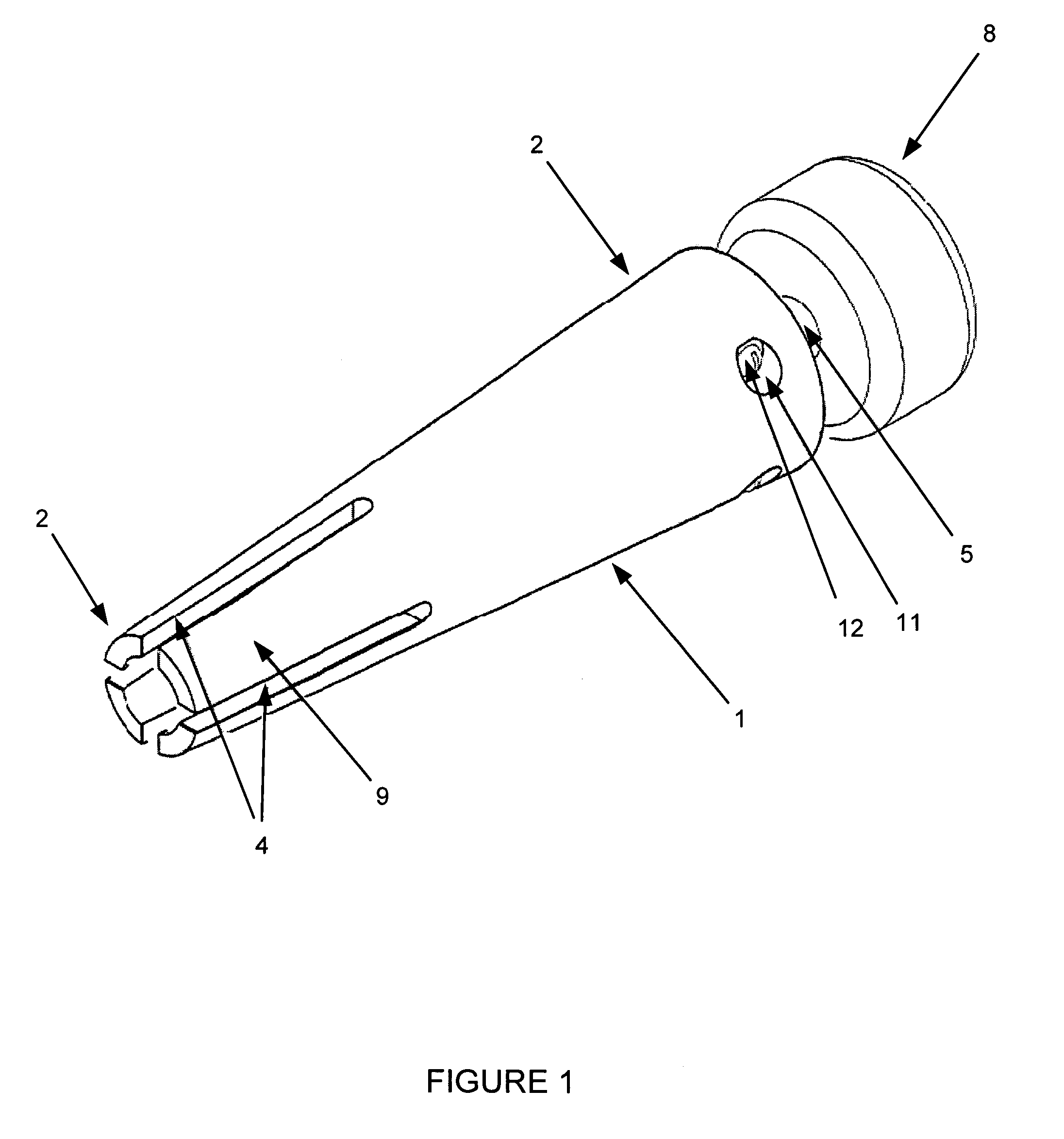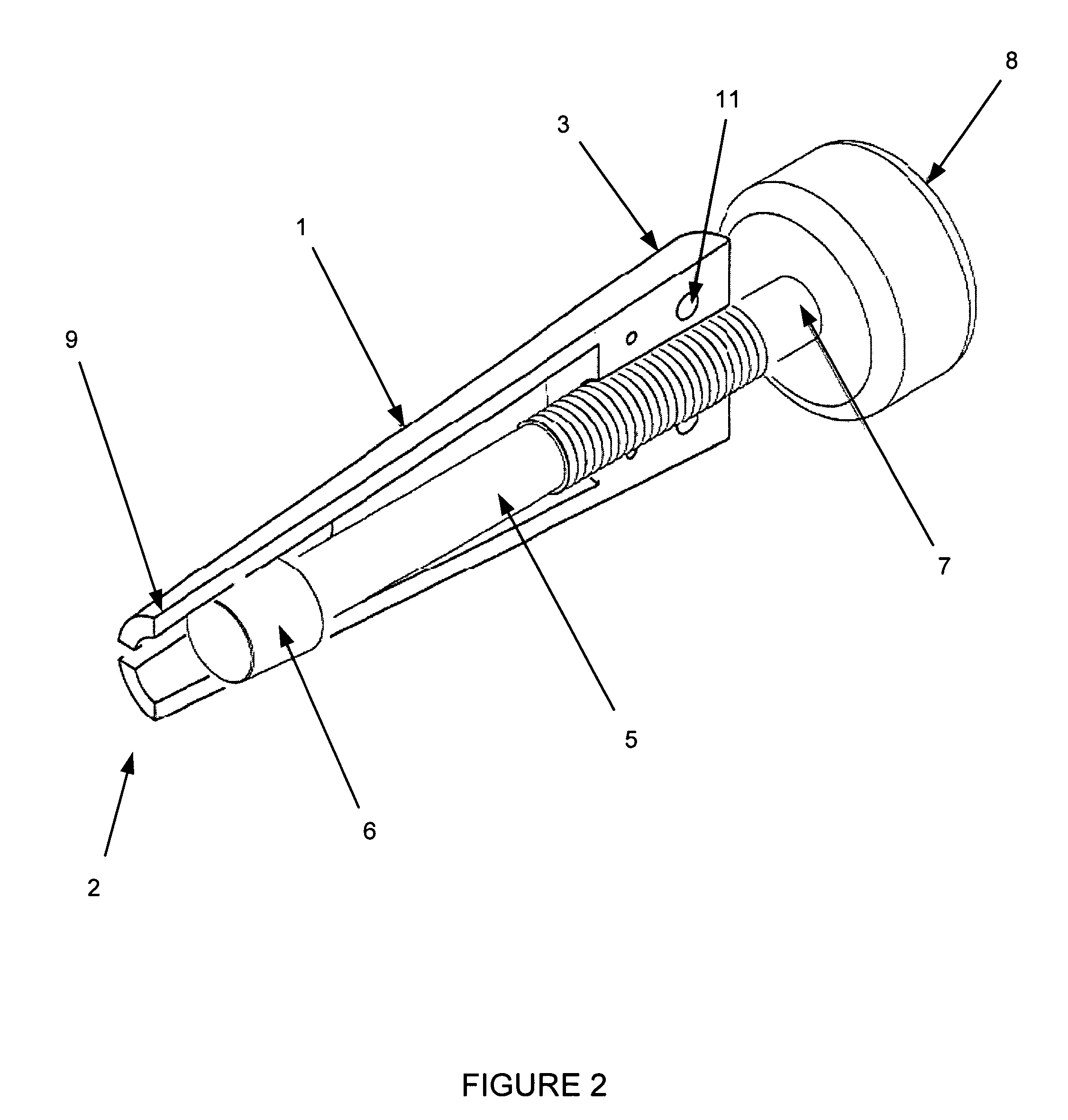Light bulb base extractor
a technology of extractor and bulb base, which is applied in the direction of glass recycling, manufacturing tools, wrenches, etc., can solve the problems of deformation or damage of the socket itself, further breakage of any remaining glass, and deformation of the bulb base structur
- Summary
- Abstract
- Description
- Claims
- Application Information
AI Technical Summary
Benefits of technology
Problems solved by technology
Method used
Image
Examples
Embodiment Construction
[0011]As shown in FIGS. 1, 2, and 3 a first embodiment of a device according to this invention includes a hollow elongated conical cylinder 1 with a narrower apex end 2 and an opposing wider base end 3. Two or more slits or slots 4 extend from the apex end 2 length-wise along the conical cylinder 1 for a portion of its length. As shown in FIG. 2, the diameter of the interior of the conical cylinder 1 can be variable, and the interior of the conical cylinder 1 is threaded at least partially, typically near the base end 3. A cylindrical rod 5 is located in the interior of the conical cylinder 1, with an insertion end 6 inside the conical cylinder and an opposing handle end 7 extending out through the base end 3. The cylindrical rod 5 is threaded for at least a portion of its length to match the threads on the interior of the conical cylinder 1. The insertion end 6 is moved longitudinally inside the conical cylinder 1 by screwing the rod 5 into or out of the conical cylinder 1 through ...
PUM
 Login to View More
Login to View More Abstract
Description
Claims
Application Information
 Login to View More
Login to View More - R&D
- Intellectual Property
- Life Sciences
- Materials
- Tech Scout
- Unparalleled Data Quality
- Higher Quality Content
- 60% Fewer Hallucinations
Browse by: Latest US Patents, China's latest patents, Technical Efficacy Thesaurus, Application Domain, Technology Topic, Popular Technical Reports.
© 2025 PatSnap. All rights reserved.Legal|Privacy policy|Modern Slavery Act Transparency Statement|Sitemap|About US| Contact US: help@patsnap.com



